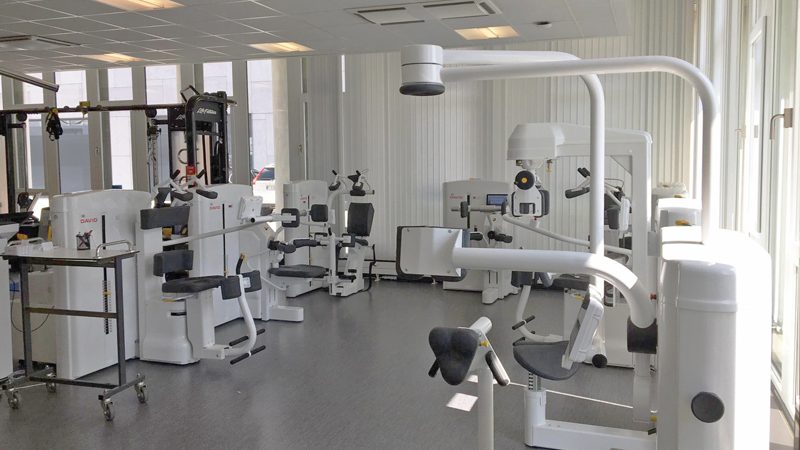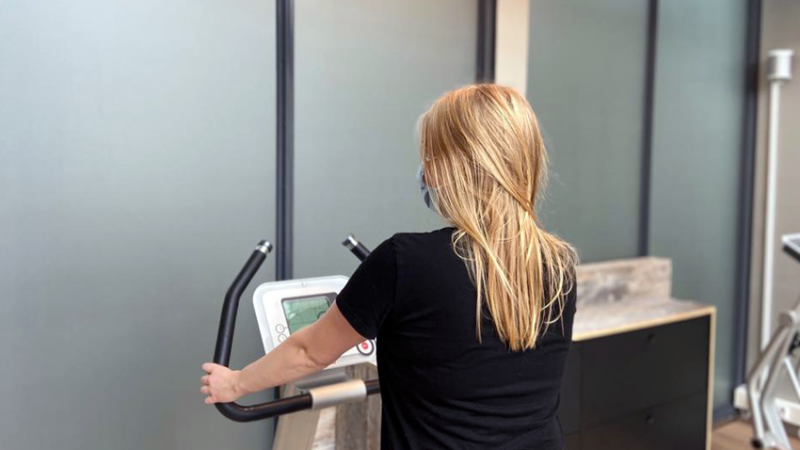Coronavirus, what is it?
Each virus behaves like a parasite for the purpose of multiplying. A virus does that by invading a host cell and releasing genetic material into that cell. Then the virus can pick up proteins and multiply. Thousands of virus particles can be made into new cells and as a result the become badly damaged that the cells eventually die. The more cells that are damaged, the sicker a person becomes.
Coronavirus (Covid-19)
Covid-19 is a new syndrome, but it is clear that the new coronavirus has targeted the respiratory tract.2 Covid-19 is genetically most closely related to the Severe Acute Respiratory Syndrome (SARS) virus that broke out in 2003 (3). Once ingested, the virus crawls down to the mucous membranes at the back of the throat. While the host suffers from a dry throat and a dry cough, the virus penetrates deeper into the body through the bronchi into the lungs. Meanwhile, the immune system has discovered the infection and sends antibodies and immune cells to it. If this happens in time, the infection will not develop. If this process is too slow, it results in an immunological inflammatory reaction. A significant amount of immune cells flow to the area where the virus lives. The mucous membrane in the lung vesicles thickens, making it more difficult for the lungs to get oxygen through the thin membrane of the vesicles and into the bloodstream. In addition, the lung vesicles fill up with fluid and pus. The patient gets stuffy and starts breathing faster and faster. This is the standard process for all viral pneumonia that gets out of control. (2,3)
The current course of the new coronavirus has shown that approximately 80 percent of the infected people do not or barely become ill and are able to recover without complications. The remaining 20 percent become quite ill. Symptoms include a dry cough, sneezing and fever. A large group of these recover after five or seven days, but a fraction can suddenly deteriorate for an unknown reason. They must go to the hospital, or if they were already there, be admitted into intensive care (IC). One reason for the sudden deterioration could be that the immunological response is reactivated after a few days. The inflammation in the lungs, with oedema, would then also increase, even without the presence of the virus. . Another reason could be that the immune system is unable to slow down or control the virus in time. It could also be a combination of the two reasons above. Finally, complications can also occur. For example, there may be a bacterial lung infection following the virus attack. (2)
The virus enters the body and starts fighting the disease by flooding the lungs with immune cells, which clean up the damaged cells and repair the lung tissue. If the process works properly, this inflammatory mechanism is meticulous and limited to the infected tissues. But sometimes the immune response is too great, destroying healthy cells as well. As a result of this strong immune response, more cells are damaged and fewer healthy cells remain. More waste products accumulate in the lungs and the patient’s pneumonia gets worse.
In the third phase, pneumonia worsens even further, which can lead to respiratory insufficiency. Even if the patient does not die as a result, the damage to the lungs can be irreparable. According to the World Heath Organisation (WHO), SARS led to the formation of holes in the lungs, giving them a “honeycomb-like appearance”, and it seems that this pattern can also be recognized in patients with the new coronavirus. The holes are likely caused by the hyper-reactivity of the immune system, leading to the formation of scar tissue and stiffening of the lungs. In this case, the patient usually has to wait for ventilation. Meanwhile, the membranes between the pulmonary vesicles and the blood vessels become increasingly porous, allowing the vesicles to fill with fluid and unable to supply the bloodstream with oxygen. In very severe cases, the lungs drown and the patient can no longer breathe. This is how people die from the disease. (4)

Consequences for COVID-19 patients
In the areas where the scar tissue forms , the lung tissue loses its elasticity, the elasticity goes out of the lung tissue, and oxygen exchange can no longer occur as it should . If a lot of scar tissue is formed, it can lead to reduced stamina, for example. (5)
Estimates of the number of patients with lasting side effects in the lungs are currently being collected. Patients requiring ICU ventilation are particularly at risk of permanent damage to lung tissue. There may be inflammations that cause scar tissue on the lungs. A new pulmonary disease is emerging, which for the time being we call the ‘Corona Obstructive Lung Disease (COLD)’. (6)
In SARS, MERS and COVID-19 there have been indications of damage to the liver – often in mild form, although in the most severe cases severe liver damage and even liver failure has occurred.
Six percent of SARS patients (and as many as a quarter of MERS patients) experienced acute renal insufficiency. Research shows that the new coronavirus can have the same consequences. (4)
The chance that patients will develop symptoms and the intensity of the symptoms depends on the duration and nature of the immobilization and sedation, ventilation duration, and underlying morbidity. Patients recovering from the COVID-19 virus are expected to experience one or more symptoms:
- Reduced lung function: pulmonary fibrosis / reduced lung capacity
- Reduced breathing power (inspiratory and expiratory)
- IC-acquired muscle weakness due to prolonged inactivity
- ICU-acquired polyneuropathy and myopathy
- Reduced aerobic and anaerobic endurance
- Joint pain and/or stiffness
- Overall fatigue
- Problems in ADL
- Malnutrition
- Cognitive: memory, concentration, dealing with stimuli and plans
- Fear and depression
- Post-traumatic stress syndrome (PTSD) (7)

Many ICU survivors experience physical, cognitive and psychological problems after discharge from the ICU. This is also known as PICS. These IC-related residual symptoms lead to long-term limitations in daily functioning and reduced quality of life. Various studies have mentioned muscle weakness, pain, cognitive disorders, delirium, anxiety, depression and post-traumatic stress disorders as direct consequences of the critical illness. IC acquired muscle weakness is one of the most striking consequences of critical illness, and also one of the most important points of application for physiotherapy.
Various studies have mentioned muscle weakness, pain, cognitive disorders as direct consequences of the critical illness.
The cause of this muscle weakness can be in the muscle (critical illness polymyopathy) as well as in the nerve (critical illness polyneuropathy). Because these conditions often occur simultaneously and are difficult to differentiate, the term ‘intensive care unit acquired weakness’ (ICU-AW) is used. The main risk factors are sepsis, systemic inflammatory response syndrome (SIRS), multiple organ failure (MOF), immobilization, and hyperglycemia.
This muscle weakness has adverse consequences for the withdrawal of ventilation and recovery in the short and long term. The incidence of ICU-AW reported in the literature varies depending on the population studied, from 60% in patients with acute respiratory distress syndrome (ARDS) to 100% in patients with SIRS in combination with MOF”. (8)
After an ICU treatment, there is also a risk of cognitive disorders such as memory loss, attention and concentration disorders, and problems with targeted action. Patients with cognitive disorders as a result of an ICU treatment have difficulty planning daily actions, short-term memory disorders and problems with concentration. Many patients experience IC treatment as stressful due to feelings of anxiety, tightness, pain and powerlessness. As a result, ICU survivors have an increased risk of developing anxiety, depression and a post-traumatic stress disorder. (9)
Long-term consequences of PICS
- 60% keeps physical complaints after 1 year (Sommer et al, 2012)
- 32% anxiety complaints after 6 months (on brain-ICU) (Bienvenue et al, Parker et al)
- 30% depression after 6 months (on brain-ICU) (Bienvenue et al, Parker et al)
- 20-23% develops PTSD (Bienvenue et al, Parker et al)
- 40% keeps cognitive complaints (Pandharipande et al).
- Between 4-62%) reported long term cognitive complaints (Wolters et al), depending on follow-up duration and clinimetry.
Risk factor PICS (duration of ICU admission/breathing, co-morbidity, delirium, sepsis, ARDS, anxiety/depression history, ICU acquired weakness (8)
Advice on pulmonary problems in PICS
It is expected that pulmonary problems (COLD) will become an important limiting factor during rehabilitation after COVID-19 infection, where lung rehabilitation is indicated if this problem is at the forefront (3). Knowledge about this is concentrated in specialist lung rehabilitation departments. Pulmonary rehabilitation requires a very gradual build-up of activities, in which a distinction should be made between ‘overusers’ and ‘underperformers’, and treatment should always be tailored to the specific patient factors. (8)
In comparison with the average PICS patient, the COVID-19 group is likely to have more permanent lung damage and to suffer more and longer periods of excessive psychosocial stress (with a high risk of psychiatric morbidity) (8). A possible cause of this is that the average admission to an ICU is 10 days and 23 days in the case of a COVID-19 patient (10). Serious to very seriously ill patients with COVID-19 will therefore require intensive physiotherapeutic counselling after hospitalisation. (11)
Bastiaan Meijer
Digital Marketing Manager
bastiaan.meijer@davidhealth.com
Resources:
1.https://www.alphens.nl/nieuws/coronavirus-wat-is-het.html. Geraadpleegd op 4 april 2020.
2.https://www.trouw.nl/wetenschap/wat-dit-coronavirus-zo-bijzonder maakt~bab00f5c/?referer=https%3A%2F%2Fwww.google.com%2F. Geraadpleegd op 4 april 2020.
3.Wuhan. Ned Tijdschr Geneeskd 2020; 164: D4847. https://www.ntvg.nl/artikelen/nieuw-van-de-markt-coronavirusuitbraak-wuhan. Geraadpleegd op 4 april 2020.
4.https://www.nationalgeographic.nl/wetenschap/2020/02/wat-het-nieuwe-coronavirus-met-het-lichaam-doet. Geraadpleegd op 4 april 2020
5.https://www.scientias.nl/wat-houden-coronapatienten-over-aan-hun-ontmoeting-met-het-virus/ Geraadpleegd op 4 april 2020.
6.https://www.longfonds.nl/nieuws/longfonds-volop-in-voorbereiding-op-nieuwe-patientengroep-door-corona. Geraadpleegd op 4 april 2020.
7.https://www.npi.nl/home-reach#lees-meer-over-herstel-na-covid-19-gerelateerde-ziekenhuis-of-ic-opname
8.https://revalidatiegeneeskunde.nl/sites/default/files/attachments/Beleid/COVID-19/behandelprogramma_covid-19_post-ic_versie_1.0_de_hoogstraat_30_maart_2020.pdf
9.https://www.nurseacademy.nl/leermodules/leermodules_artikel/t/het_post_intensivecaresyndroom_verborgen_ziekte_na_ic_opname
10.RIVM-baas legt uit: schatting ic-ligduur al eerder naar boven bijgesteld (2 april 2020)
https://www.parool.nl/nederland/rivm-baas-legt-uit-schatting-ic-ligduur-al-eerder-naar-boven-bijgesteld~b3664630/?referer=https%3A%2F%2Fwww.google.com%2F
11.https://www.kngf.nl/binaries/content/wp-content/kngf/onbeveiligd/nieuwsitem-bestanden/2020/maart/fysiotherapie_covid-19_v1_def.pdf
 English
English 

























